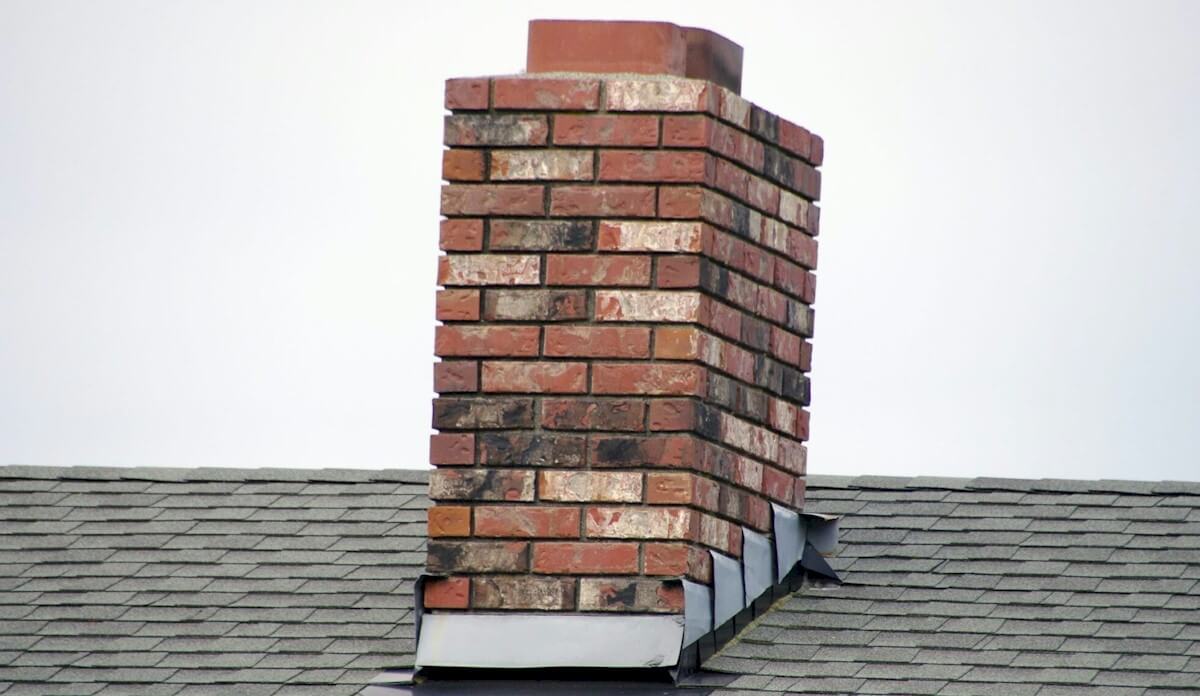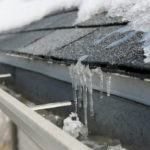
Everything You Need To Know About Roof Flashing
Are you aware of the vital role that roof flashing plays in keeping your home safe and protected from the elements? Roof flashing may not be the most glamorous aspect of your home’s construction, but it is undoubtedly one of the most crucial. This comprehensive guide will delve into everything you need to know about roof flashing, from its purpose to its various types and installation methods.
Whether you are a homeowner looking to understand the significance of roof flashing or a professional in the construction industry seeking to enhance your knowledge, this article will provide valuable insights. Join us as we explore the essential role of roof flashing and discover how it ensures the longevity and durability of your roof. Let’s dive in and unravel the secrets behind this unsung hero of home construction.
What is roof flashing?
Roof flashing is a vital component of any well-built roof. It refers to thin pieces of material, usually metal or rubber, installed in various roof areas to prevent water from seeping into the structure. The primary purpose of roof flashing is to create a watertight barrier between joints, penetrations, and transitions on the roof. By directing water away from vulnerable areas, flashing helps to protect the underlying roofing materials and the integrity of the entire roof system.
Roof flashing is typically applied in valleys, chimneys, skylights, vent pipes, and sidewalls. These areas are where water is most likely to accumulate and infiltrate, making them prime targets for potential leaks. Without proper flashing, water can seep into the roof, leading to extensive damage, including rotting of the roof deck, mold growth, and compromised structural integrity. Now that we understand the purpose of roof flashing let’s explore the different materials used for its construction.
Importance of roof flashing
Understanding the importance of roof flashing is crucial for homeowners and construction professionals alike. As mentioned earlier, roof flashing is a protective barrier against water infiltration, preventing leaks and damage to the roof structure. Flashing water away from vulnerable areas ensures that water flows safely off the roof and into the gutter system.
Additionally, roof flashing helps maintain the roof’s structural integrity by preventing water damage. When water penetrates the roof, it can cause the underlying materials, such as the roof deck and rafters, to deteriorate over time. This can lead to costly repairs or even necessitate a complete roof replacement.
Moreover, roof flashing also plays a role in ensuring energy efficiency in the home. Properly installed flashing helps to prevent air and heat leaks, reducing the strain on your heating and cooling systems. This can result in lower energy bills and a more comfortable living environment.
Given the vital role that roof flashing plays in protecting your home, it is essential to understand the different types of materials used for flashing and where they are commonly applied.
Types of roof flashing materials
Roof flashing can be made from various materials, each with its own advantages and suitability for specific applications. The choice of flashing material depends on factors such as climate, roof type, and personal preference. Here are some of the most common types of roof flashing materials:
Metal Flashing: Metal flashing is widely used and comes in different forms, including aluminum, copper, galvanized steel, and lead. Metal flashing is known for its durability, corrosion resistance, and ability to withstand extreme weather conditions. It is commonly used in areas such as valleys, chimneys, and skylights.
Rubber Flashing: Rubber flashing, also known as thermoplastic olefin (TPO) or ethylene propylene diene monomer (EPDM) flashing, is popular for its flexibility and ease of installation. It is commonly used around vent pipes and in areas prone to expansion and contraction, such as sidewalls.
Bituminous Flashing: Bituminous flashing, also called asphalt flashing, is made from asphalt-impregnated felt and is commonly used in built-up roofing systems. It provides excellent waterproofing properties and is often applied in roof-to-wall transitions and metal roof seams.
PVC Flashing: PVC flashing is a durable, lightweight option that offers excellent resistance to UV rays and chemical exposure. It is commonly used in areas where chemical exposure is a concern, such as near HVAC units or industrial buildings.
Now that we have explored the different types of roof flashing materials let’s move on to understanding where these materials are commonly applied on a roof.
Common roof flashing locations
Roof flashing is strategically installed in specific areas of a roof to ensure maximum protection against water infiltration. Here are some of the most common locations where roof flashing is applied:
Valley Flashing: Valley flashing is installed in the valleys formed by the intersection of two roof slopes. Valleys are naturally prone to water accumulation, making proper flashing crucial to prevent leaks.
Chimney Flashing: Chimney flashing is applied around the base of the chimney to create a watertight seal. It typically consists of step flashing, which is installed between each course of chimney bricks, and counter flashing, which is embedded into the mortar joints.
Skylight Flashing: Skylight flashing is used to seal the area where the skylight meets the roof. It helps prevent water from entering the skylight frame and ensures a tight seal.

Vent Pipe Flashing: Vent pipe flashing is installed around plumbing vent pipes to prevent water from seeping into the roof at these penetrations. It is commonly made of metal and incorporates a rubber gasket for a secure seal.
Sidewall Flashing: Sidewall flashing is applied where the roof meets a vertical wall, such as a dormer or sidewall. It helps to direct water away from the wall and prevent leaks.

Installing roof flashing in these common locations can significantly reduce the risk of water infiltration and the potential for roof damage. However, it is essential to be aware of the signs that indicate a problem with your roof flashing.
Signs of roof flashing problems
Detecting roof flashing issues early on can help prevent costly repairs and extensive damage to your roof and home. Here are some common signs that indicate a problem with your roof flashing:
Water stains on ceilings or walls: If you notice water stains on your ceilings or walls, it could be a sign of a leak caused by damaged or improperly installed flashing.
Mold or mildew growth: Excessive moisture caused by a flashing problem can lead to mold or mildew growth on the walls or ceilings.
Visible corrosion or rust: Metal flashing can corrode or rust over time, compromising effectiveness. If you notice signs of corrosion or rust on your flashing, it may need to be repaired or replaced.
Missing or damaged flashing: Inspect your roof for any missing or damaged flashing. Strong winds, falling debris, or improper installation can cause flashing to become dislodged or damaged.
Curling or cracking of flashing: Over time, flashing materials can deteriorate, leading to curling or cracking. This can create openings for water to seep into the roof.
If you notice any of these signs, it is crucial to promptly repair or replace the damaged flashing. Let’s explore how to address roof flashing problems.
How to repair or replace roof flashing
Repairing or replacing roof flashing requires careful attention to detail and understanding the specific flashing material and location. While homeowners can often do minor repairs, it is recommended to consult a professional for major repairs or complete flashing replacement. Here are some general steps to follow for repairing or replacing roof flashing:
Identify the problem: Identify the specific area of the flashing that needs repair or replacement. Thoroughly inspect the flashing and surrounding areas to determine the extent of the problem.
Gather the necessary materials: Depending on the type of flashing material, you may need specific tools and materials for the repair or replacement. Common tools include a pry bar, roofing cement, roofing nails, and a caulking gun.
Remove the damaged flashing: If replacing the flashing, carefully remove the damaged section using a pry bar and appropriate tools. Take care not to damage the surrounding roofing materials.
Clean the area: Once the damaged flashing is removed, clean the area thoroughly to ensure proper adhesion of the new flashing. Remove any debris or old roofing cement.
Install the new flashing: Cut the new flashing to the appropriate size and shape, ensuring a proper fit. Install the new flashing using roofing cement, roofing nails, or other recommended fasteners. Pay attention to overlap and proper sealing to create a watertight barrier.
Apply sealant: After installing the new flashing, apply a generous amount of roofing sealant to further enhance the waterproofing properties and ensure a tight seal.
Inspect and test: Once the repair or replacement is complete, inspect the area again to ensure everything is properly installed. Test the area by running water over the flashing to check for leaks.
Remember to exercise caution and follow safety guidelines when working on your roof. If you are unsure about the repair process or feel uncomfortable working at heights, it is best to consult a professional roofing contractor.
Hiring a professional for roof flashing installation
While homeowners can often handle minor repairs or maintenance tasks, it is recommended to hire a professional roofing contractor for roof flashing installation, major repairs, or complete replacements. A professional roofing contractor has the necessary expertise, tools, and knowledge to ensure that the flashing is installed correctly and effectively protects your home from water damage.
When hiring a professional for roof flashing installation, consider the following factors:
Experience: Choose a roofing contractor with extensive experience in installing roof flashing. Ask for references and check their portfolio to assess the quality of their work.
Credentials and licenses: Ensure that the roofing contractor is licensed and insured. This protects you from liability in case of accidents or damage during the installation process.
Written estimate: Request a written estimate that includes the cost of materials, labor, and any additional services. This will help you compare quotes from different contractors and make an informed decision.
Warranty: Inquire about the warranty provided by the roofing contractor for both materials and labor. A reputable contractor should offer a guarantee on their workmanship.
By hiring a professional for roof flashing installation, you can have peace of mind knowing that your home is protected by a properly installed and watertight flashing system. However, it’s also important to maintain your roof flashing proactively to ensure its longevity and effectiveness.
DIY tips for maintaining roof flashing

Regular maintenance of your roof flashing can help extend its lifespan and prevent potential issues. Here are some DIY tips for maintaining your roof flashing:
Inspect regularly: Conduct regular visual inspections of your roof flashing to identify any signs of damage or deterioration. Look for signs of rust, corrosion, cracking, or separation.
Clear debris: Keep the area around your roof flashing clear of debris, such as leaves, branches, and dirt. Debris can trap moisture and cause damage to the flashing over time.
Reapply sealant: If you notice any gaps or cracks in the sealant around your flashing, reapply the roofing sealant to ensure a tight seal. This can help prevent water from seeping into the roof.
Clean gutters: Properly functioning gutters and downspouts are essential for directing water away from your roof. Regularly clean your gutters to prevent water from backing up and potentially causing damage to the flashing.
Trim overhanging branches: Trim any overhanging branches that may come into contact with your roof. Falling branches can damage the flashing and compromise its effectiveness.
Address issues promptly: If you notice any signs of damage or problems with your roof flashing, address them promptly. Ignoring minor issues can lead to more significant damage and costly repairs in the future.
By following these DIY tips, you can help maintain the integrity of your roof flashing and ensure that it protects your home effectively.
Conclusion: The essential role of roof flashing in protecting your home
In conclusion, roof flashing plays a crucial role in protecting your home from water damage and ensuring the longevity and durability of your roof. By creating a watertight barrier in vulnerable areas, roof flashing diverts water away from the roof and prevents potential leaks and structural damage. Understanding the importance of roof flashing, the materials used, and its common locations on the roof can help homeowners make informed decisions and take proactive measures to maintain their flashing systems.
Whether you tackle minor repairs yourself or hire a professional roofing contractor, regular inspections and maintenance are key to the effective functioning of your roof flashing. By giving due attention to this unsung hero of home construction, you can protect your home and enjoy a safe, leak-free living environment for years to come.



